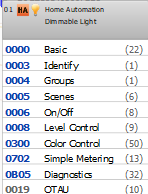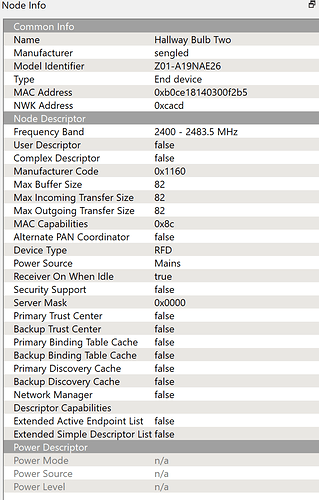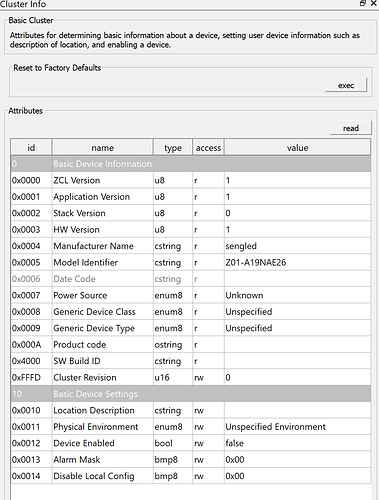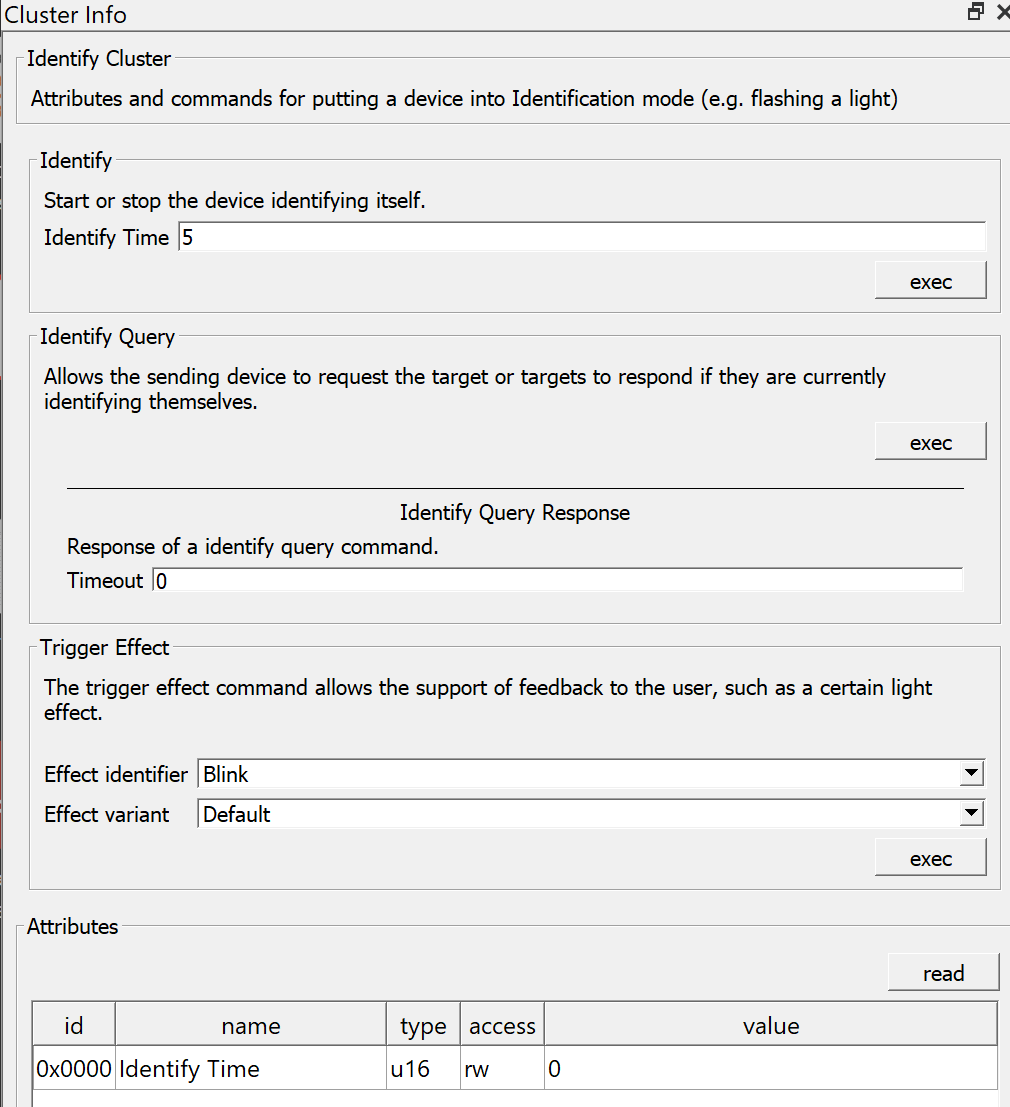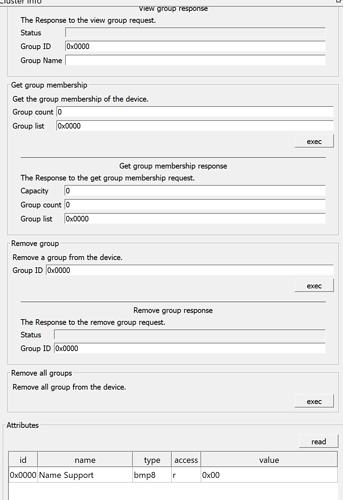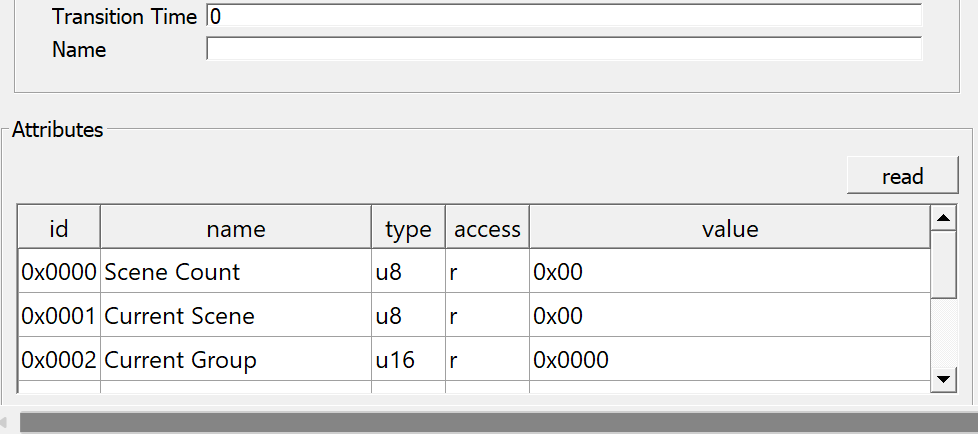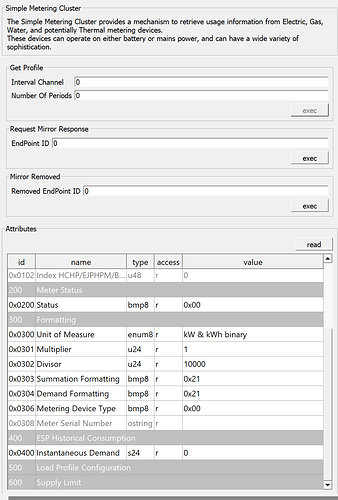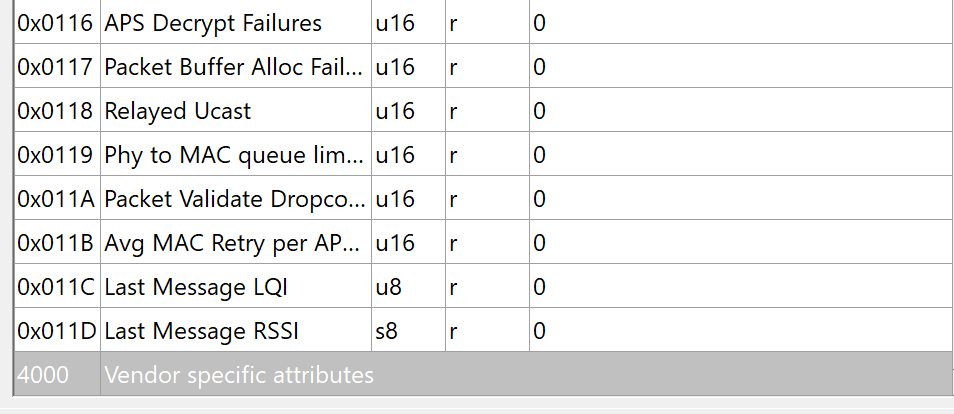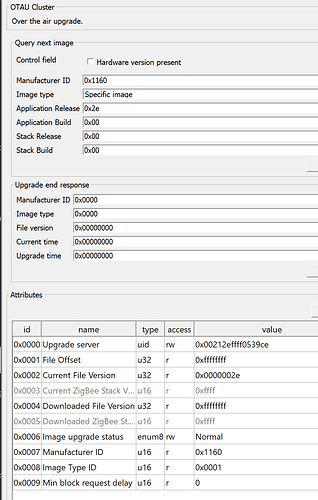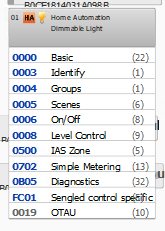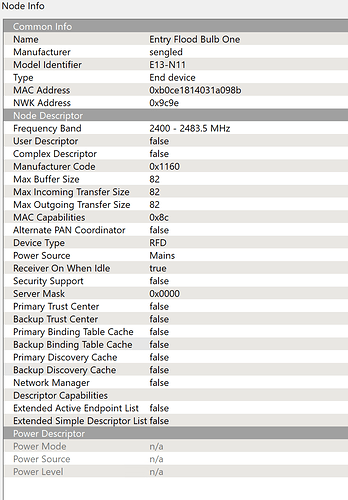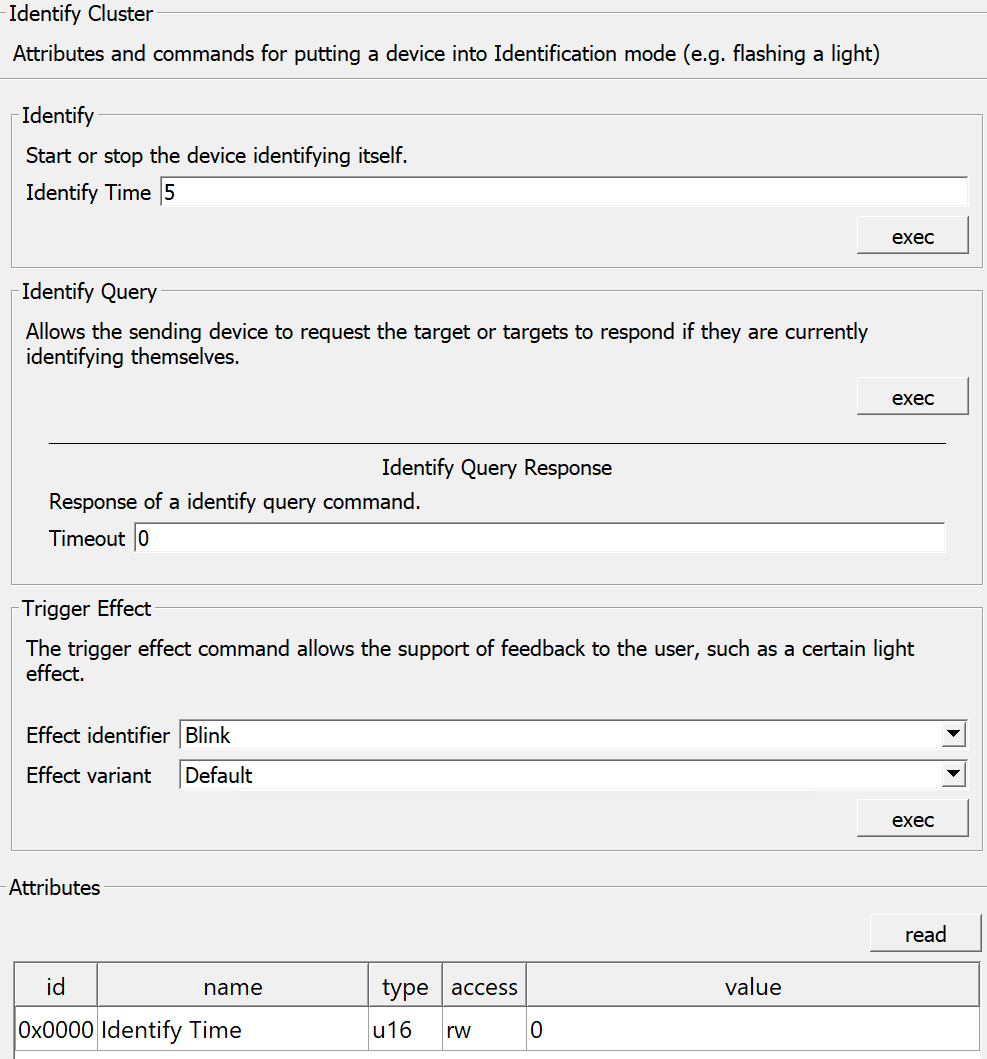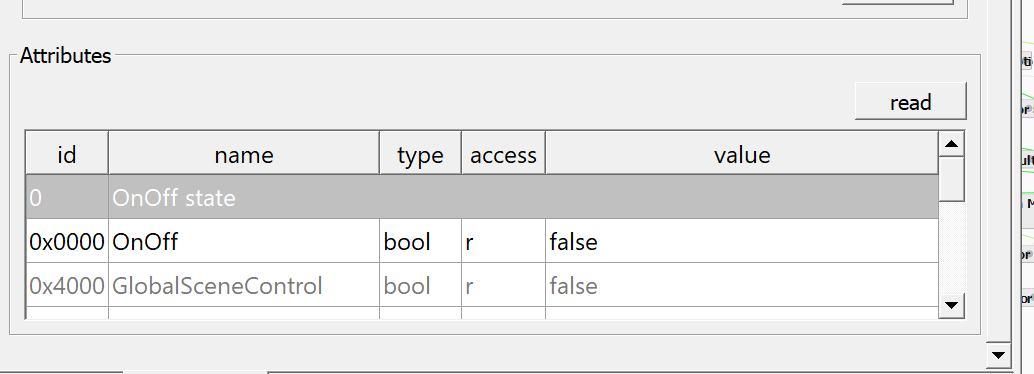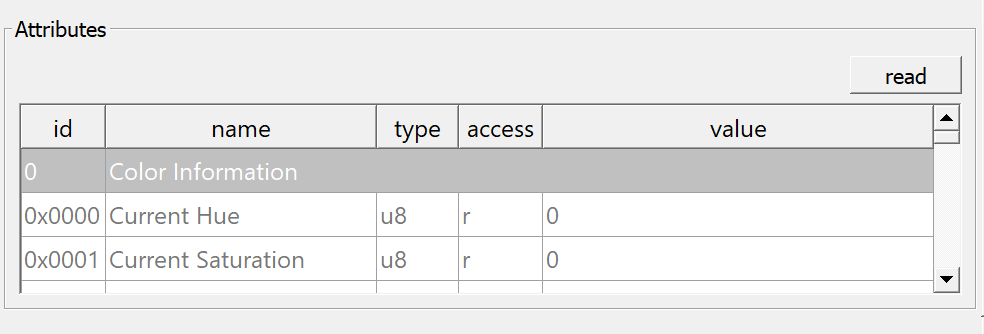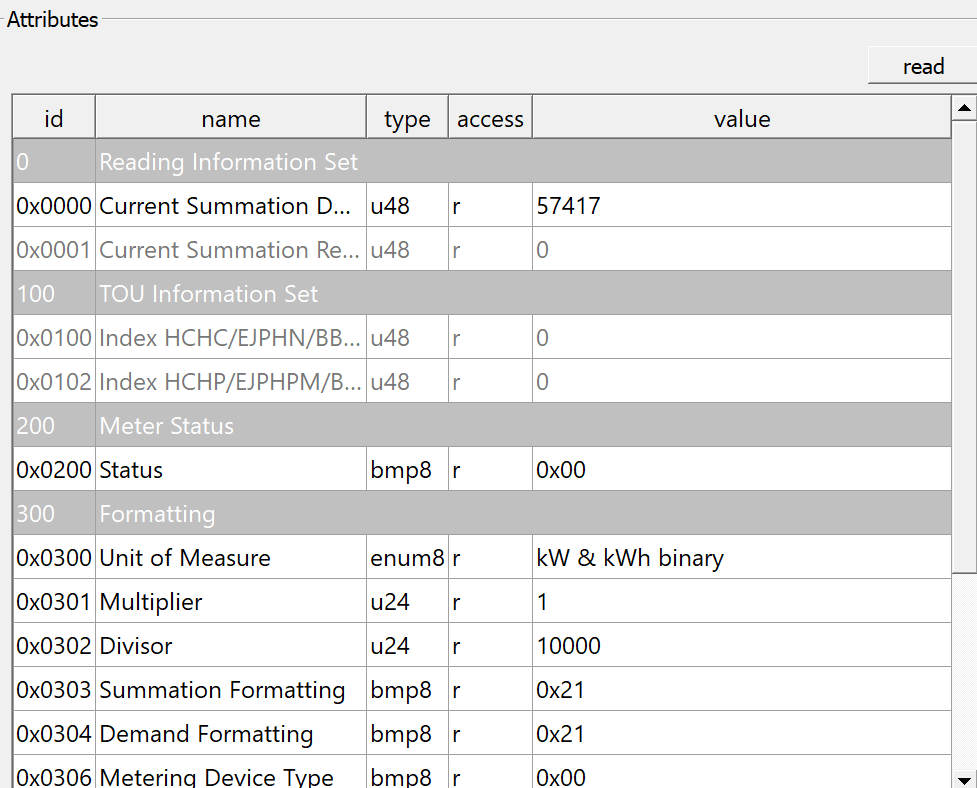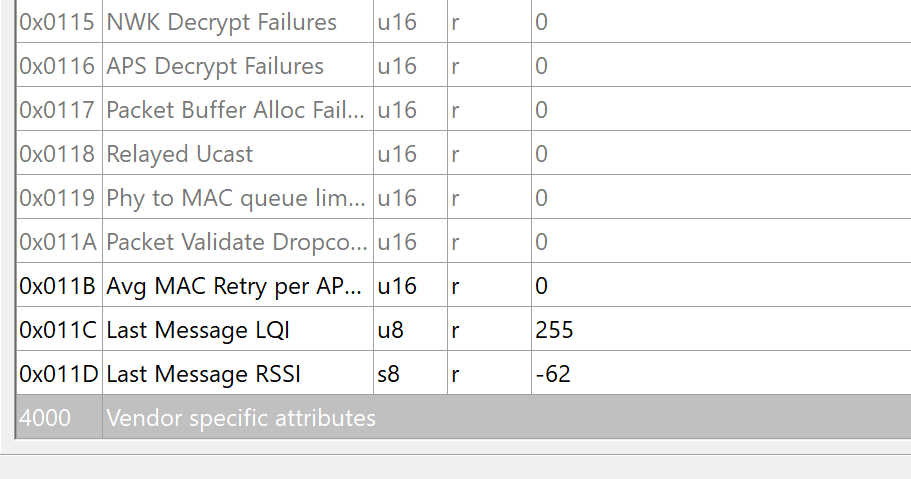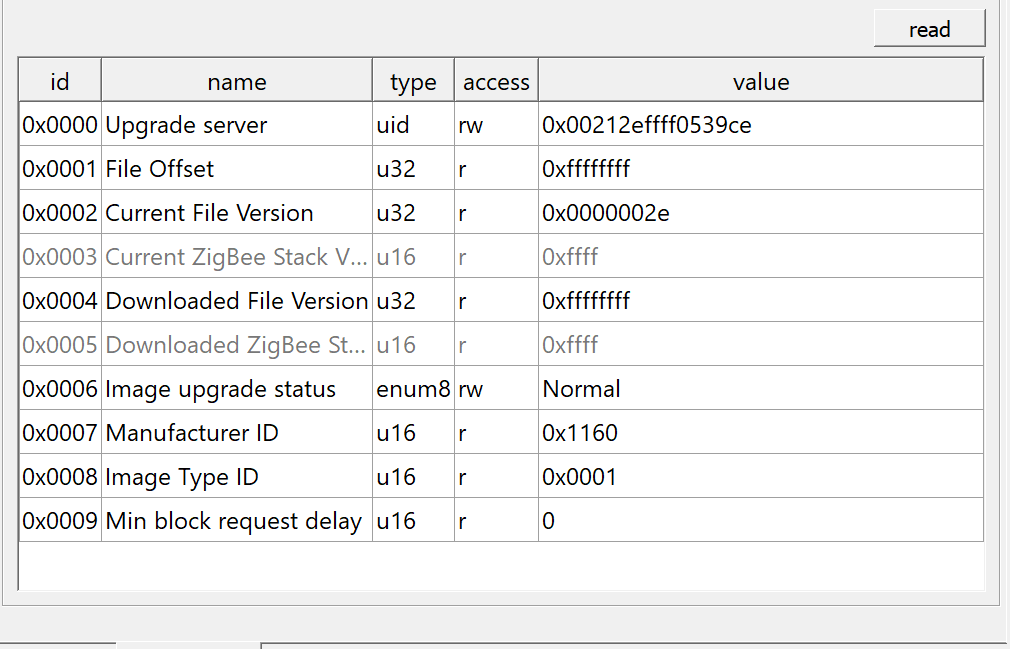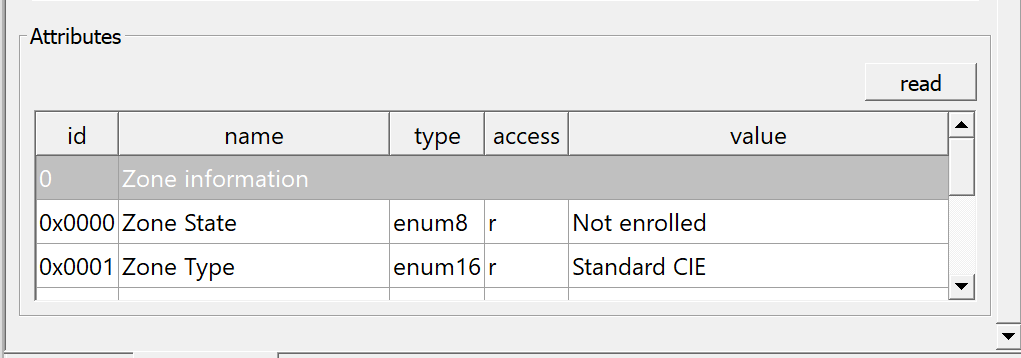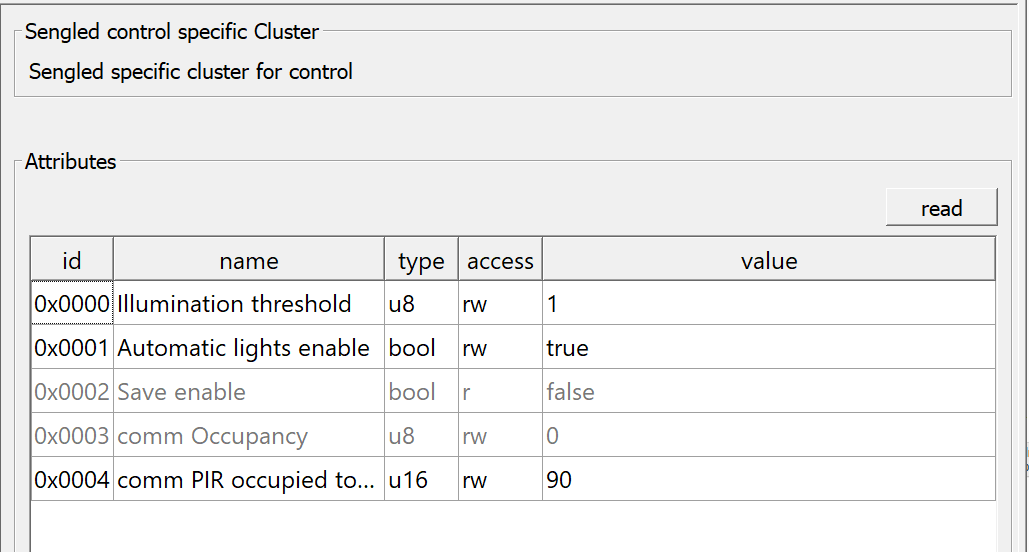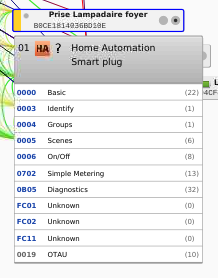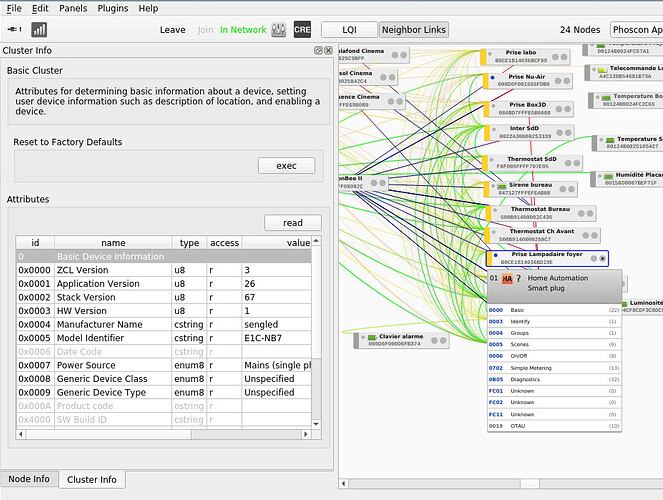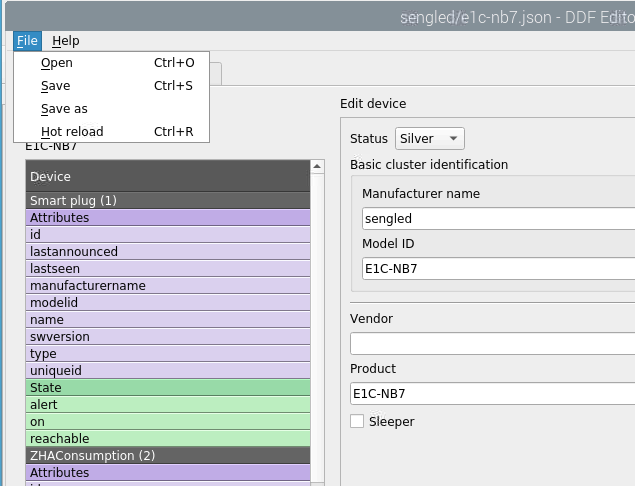My conclusion is that the problem was not introduced by the deConz update. I need to strengthen my mesh network with additional routers/repeaters. And it may be time to upgrade the 10 year machine that hosts my deConz/Conbee II. There are other processes running on it that are slowing it down.
WRT DDFs. Here is the auto generated for the P38 Bulb. I don’t see where it includes the Sengled specific Cluster and Occupancy readings.
{
“schema”: “devcap1.schema.json”,
“manufacturername”: “sengled”,
“modelid”: “E13-N11”,
“product”: “E13-N11”,
“sleeper”: false,
“status”: “Draft”,
“subdevices”: [
{
“type”: “$TYPE_DIMMABLE_LIGHT”,
“restapi”: “/lights”,
“uuid”: [
“$address.ext”,
“0x01”
],
“items”: [
{
“name”: “attr/id”
},
{
“name”: “attr/lastannounced”
},
{
“name”: “attr/lastseen”
},
{
“name”: “attr/manufacturername”
},
{
“name”: “attr/modelid”
},
{
“name”: “attr/name”
},
{
“name”: “attr/swversion”
},
{
“name”: “attr/type”
},
{
“name”: “attr/uniqueid”
},
{
“name”: “state/alert”,
“description”: “The currently active alert effect.”,
“default”: “none”
},
{
“name”: “state/bri”,
“description”: “The current brightness.”,
“refresh.interval”: 5
},
{
“name”: “state/on”,
“description”: “True when device is on; false when off.”,
“refresh.interval”: 5
},
{
“name”: “state/reachable”
}
]
},
{
“type”: “$TYPE_CONSUMPTION_SENSOR”,
“restapi”: “/sensors”,
“uuid”: [
“$address.ext”,
“0x01”,
“0x0702”
],
“fingerprint”: {
“profile”: “0x0104”,
“device”: “0x0101”,
“endpoint”: “0x01”,
“in”: [
“0x0000”,
“0x0702”
]
},
“items”: [
{
“name”: “attr/id”
},
{
“name”: “attr/lastannounced”
},
{
“name”: “attr/lastseen”
},
{
“name”: “attr/manufacturername”
},
{
“name”: “attr/modelid”
},
{
“name”: “attr/name”
},
{
“name”: “attr/swversion”
},
{
“name”: “attr/type”
},
{
“name”: “attr/uniqueid”
},
{
“name”: “config/on”
},
{
“name”: “config/reachable”
},
{
“name”: “state/consumption”,
“refresh.interval”: 300,
“default”: 0
},
{
“name”: “state/lastupdated”
},
{
“name”: “state/power”,
“refresh.interval”: 300,
“default”: 0
}
]
}
],
“bindings”: [
{
“bind”: “unicast”,
“src.ep”: 1,
“dst.ep”: 1,
“cl”: “0x0006”,
“report”: [
{
“at”: “0x0000”,
“dt”: “0x10”,
“min”: 1,
“max”: 300
}
]
},
{
“bind”: “unicast”,
“src.ep”: 1,
“dst.ep”: 1,
“cl”: “0x0008”,
“report”: [
{
“at”: “0x0000”,
“dt”: “0x20”,
“min”: 1,
“max”: 300,
“change”: “0x00000001”
}
]
},
{
“bind”: “unicast”,
“src.ep”: 1,
“dst.ep”: 1,
“cl”: “0x0500”
},
{
“bind”: “unicast”,
“src.ep”: 1,
“dst.ep”: 1,
“cl”: “0x0000”
}
]
}
